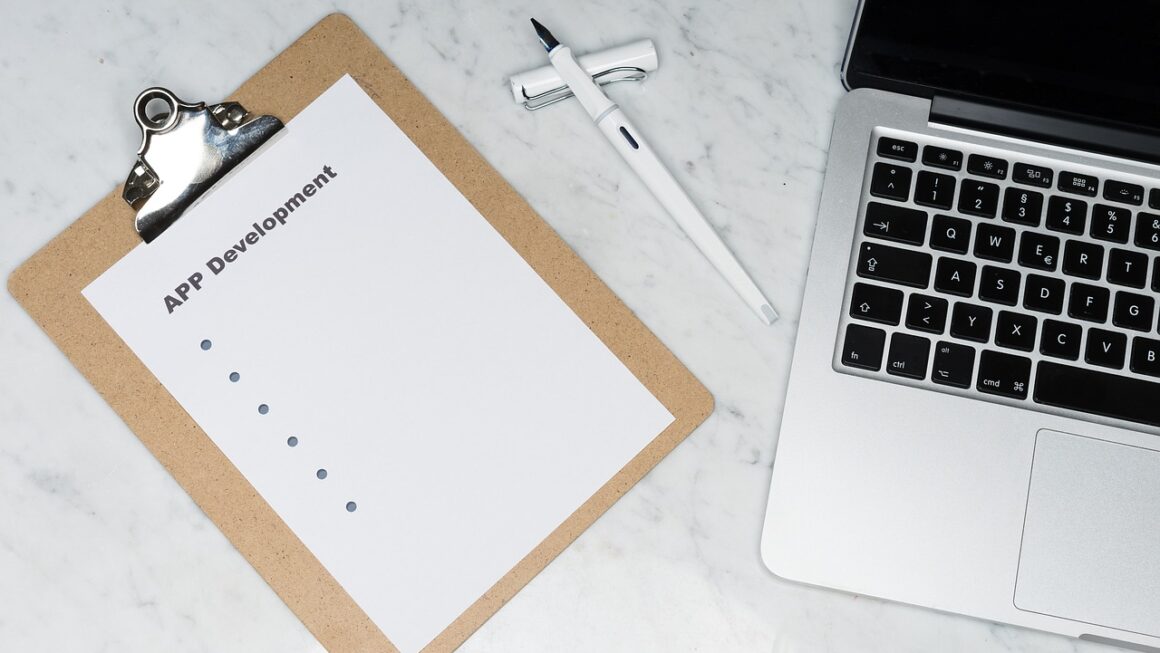The world of software development is constantly evolving, and one of the most significant advancements in recent years is the rise of AI-powered coding tools. These tools are not just futuristic novelties; they are rapidly becoming essential for developers looking to increase their productivity, improve code quality, and tackle complex problems more efficiently. From code completion and error detection to automated testing and code generation, AI is transforming the way we write and interact with code. This blog post will delve into the exciting world of coding with AI, exploring its benefits, applications, and the future it holds for the software development landscape.
What is Code with AI?
Understanding AI-Assisted Coding
Coding with AI, or AI-assisted coding, involves leveraging artificial intelligence technologies to automate, enhance, and streamline the software development process. It’s not about replacing developers, but rather providing them with intelligent tools that can assist with various coding tasks, allowing them to focus on more strategic and creative aspects of their work. This can range from simple tasks like autocompleting code snippets to more complex operations like generating entire functions or suggesting potential solutions to bugs.
Key AI Technologies Used in Coding
Several AI technologies are employed in creating these powerful coding tools:
- Machine Learning (ML): ML algorithms are trained on massive datasets of code to learn patterns, syntax, and best practices. These models can then predict and suggest code completions, identify potential errors, and even generate new code based on learned patterns. For example, GitHub Copilot uses OpenAI’s Codex, a powerful ML model, trained on billions of lines of public code.
- Natural Language Processing (NLP): NLP enables developers to interact with coding tools using natural language. This means you can describe what you want a piece of code to do in plain English, and the AI can translate that into actual code. This greatly simplifies the initial stages of development and allows for easier collaboration between developers and non-technical stakeholders.
- Deep Learning (DL): A subset of ML, deep learning, uses artificial neural networks with multiple layers to analyze data and make predictions. DL is particularly effective for complex tasks like code analysis, bug detection, and automated testing.
Benefits of Using AI in Coding
Increased Productivity and Efficiency
AI-powered coding tools can significantly accelerate the development process by automating repetitive tasks and providing instant solutions to common coding problems.
- Faster Code Completion: AI algorithms can predict what you’re going to type next, completing code snippets, function calls, and even entire blocks of code in real-time. This reduces typing time and minimizes the chance of syntax errors.
- Automated Code Generation: Some AI tools can generate entire functions or modules based on natural language descriptions or predefined templates, freeing up developers to focus on more complex and creative tasks.
- Reduced Debugging Time: AI can analyze code for potential errors, vulnerabilities, and performance bottlenecks, helping developers identify and fix issues more quickly.
Improved Code Quality and Consistency
AI can enforce coding standards, identify potential bugs, and suggest improvements to ensure that code is clean, consistent, and maintainable.
- Automated Code Reviews: AI-powered code review tools can analyze code for adherence to coding standards, potential security vulnerabilities, and performance issues, providing automated feedback and suggestions for improvement.
- Bug Detection and Prevention: AI can identify potential bugs early in the development process, reducing the cost and effort required to fix them later.
- Consistent Coding Style: AI can enforce a consistent coding style across the codebase, improving readability and maintainability.
Enhanced Learning and Skill Development
AI tools can provide real-time feedback and suggestions, helping developers learn new languages, frameworks, and best practices.
- Real-Time Guidance: AI can provide context-aware suggestions and explanations as you code, helping you understand the underlying principles and best practices.
- Learning by Example: AI can generate code snippets and examples based on your requirements, allowing you to learn by observing and adapting existing solutions.
- Exploration of New Technologies: AI can help you quickly grasp the basics of new languages and frameworks, enabling you to explore new technologies more efficiently.
Practical Applications of AI in Coding
Code Completion and Suggestion
This is perhaps the most well-known application of AI in coding. Tools like GitHub Copilot, Tabnine, and Kite provide real-time code suggestions as you type, predicting the next line of code, function calls, and even entire blocks of code.
- Example: Imagine you’re writing a Python function to calculate the factorial of a number. As you type `def factorial(n):`, the AI might suggest the following code:
“`python
def factorial(n):
if n == 0:
return 1
else:
return n factorial(n-1)
“`
This saves you time and effort and can also help you discover more efficient or elegant ways to solve problems.
Bug Detection and Prevention
AI can analyze code for potential errors, vulnerabilities, and performance bottlenecks. Tools like SonarQube, DeepSource, and Snyk integrate AI-powered analysis to identify and flag issues early in the development process.
- Example: An AI-powered tool might detect a potential SQL injection vulnerability in your code and suggest a safer way to construct the SQL query.
Automated Testing
AI can automate the process of writing and running tests, ensuring that code is thoroughly tested and that bugs are caught early. Tools like Diffblue Cover and Testim use AI to generate unit tests automatically, reducing the time and effort required for testing.
- Example: Diffblue Cover can analyze your Java code and automatically generate a suite of unit tests that cover a significant portion of your codebase. This helps ensure that your code is robust and reliable.
Code Generation
AI can generate entire functions, modules, or even applications based on natural language descriptions or predefined templates. Tools like OpenAI’s Codex and GPT-3 can be used to generate code in various programming languages.
- *Example: You could describe your desired application in natural language, such as “a web application that allows users to create and manage todo lists,” and an AI-powered tool could generate the initial code for the application, including the user interface, database schema, and basic functionality.
Choosing the Right AI Coding Tools
Factors to Consider
Selecting the best AI coding tools for your needs requires careful consideration of several factors:
- Programming Languages Supported: Ensure that the tool supports the programming languages you use most frequently.
- Integration with Existing Tools: Choose tools that integrate seamlessly with your existing IDE, version control system, and other development tools.
- Accuracy and Reliability: Evaluate the accuracy and reliability of the AI’s suggestions and analyses. Look for tools that have been trained on large, high-quality datasets.
- Pricing and Licensing: Consider the pricing model and licensing terms of the tool. Some tools offer free trials or open-source versions, while others require paid subscriptions.
- Community Support: Check the size and activity of the tool’s community. A strong community can provide valuable support and resources.
Popular AI Coding Tools
Here are some of the most popular and effective AI coding tools available:
- GitHub Copilot: A powerful AI pair programmer that provides real-time code suggestions and completions. It’s based on OpenAI’s Codex model and supports a wide range of programming languages.
- Tabnine: An AI code completion tool that learns from your coding patterns and provides personalized suggestions. It’s available as a plugin for various IDEs and editors.
- Kite: An AI-powered coding assistant that provides real-time code documentation, examples, and suggestions. It’s particularly useful for Python development.
- DeepSource: An automated code review tool that uses AI to identify potential bugs, security vulnerabilities, and performance issues.
- SonarQube: An open-source platform for continuous inspection of code quality to perform automatic reviews with static analysis of code to detect bugs, code smells, and security vulnerabilities.
The Future of Coding with AI
Trends and Predictions
The future of coding with AI is bright, with several exciting trends and predictions:
- Increased Automation: AI will automate more and more of the software development process, from code generation to testing and deployment.
- Personalized Coding Experiences: AI will personalize the coding experience by adapting to individual coding styles, preferences, and skill levels.
- Improved Collaboration: AI will facilitate collaboration between developers by providing shared context, automating communication, and resolving conflicts.
- More Accessible Coding: AI will make coding more accessible to non-technical individuals by providing intuitive interfaces and automated code generation tools.
- AI-Driven Innovation: AI will drive innovation in software development by enabling developers to tackle complex problems and explore new technologies more efficiently.
Conclusion
Coding with AI is revolutionizing the software development landscape, offering numerous benefits in terms of productivity, code quality, and skill development. By understanding the principles, applications, and future trends of AI-assisted coding, developers can leverage these powerful tools to become more efficient, effective, and innovative. As AI technology continues to evolve, it will play an increasingly important role in shaping the future of software development. Embrace the change, experiment with different AI coding tools, and unlock the full potential of AI-powered development.




